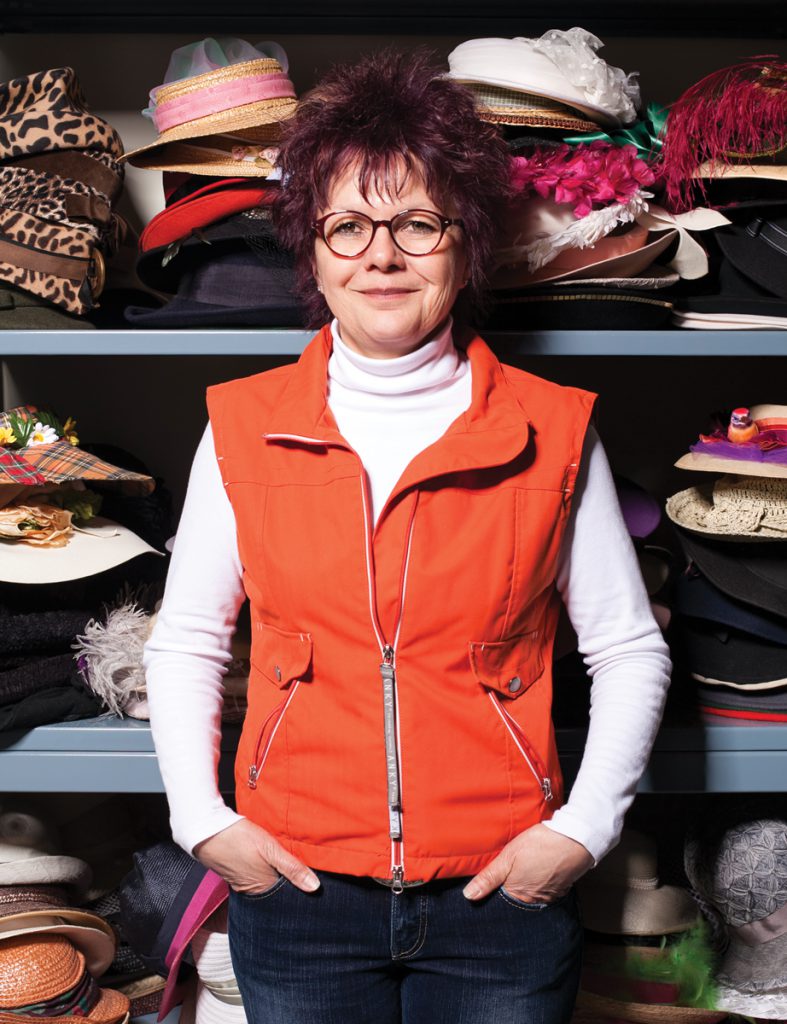Who: Karen Kucher
Age: 56
Job: Fine Arts Costumer
Experience: Rows upon rows of costumes from years of productions fill the expansive space that is the University of Alberta’s wardrobe room. Historic undergarments occupy one area, and sleek suits another. Shelves of hats – big ones, small ones – line the walls. It’s the space where Karen Kucher spends a lot of her time. She’s been creating the costumes for the University of Alberta’s media-room performances for the past 25 years.
Over the years, she’s also done costuming for the Timms Centre for the Arts, the Citadel and the Edmonton Opera. She’s made costumes for feature films including flight suits for The Fantastic Four and the Santa hat in Christmas in Wonderland. But years ago, she was on a very different career path – she spent 21 years as a letter carrier. In 1997, she decided to take a one-year leave of absence to see if a two-year Red Deer College costuming program was right for her. She enjoyed it so much, she officially quit her job, and continued her education, taking workshops in millinery – the techniques involved in hat making – and going on to take two master courses in the craft. Now, she spends her time creating everything from hats to shoes and all the clothes in between for about eight plays per year.
-“It starts with a drawing from the designer. I look at the drawing and decide what needs to be done from that. Then, we measure the actor; and try to figure out what they need in rehearsal first. They need to know how to move in certain items like a corset, which is really restricting, or a hoop skirt, or shoes, which can change the actor’s movements onstage. From this, we decide if we need to make any adjustments to the costume.
-“We need to make sure the costume looks good, but also works for the stage. Actors need items that can quickly be changed into from one scene to another. So, I’d sew the buttons on normally, and then underneath would be snaps or Velcro. So, they can quickly get in an out of the outfit. For a pair of shoes, you might switch out real laces for elastic ones, so they’re easier to get in.
